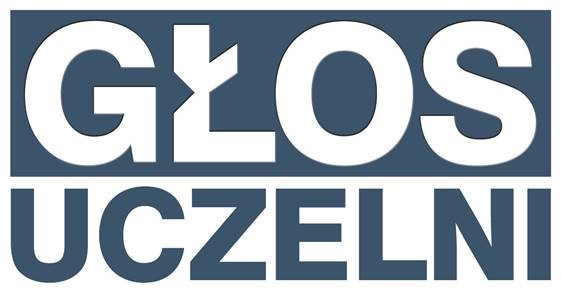
Reserach papers of the week – April 2024
We present the highest-score research papers of April 2024. These papers have ben published in journals with the highest Ministerial score – 200 points.
Solar-hydro cable pooling – Utilizing the untapped potential of existing grid infrastructure
Jakub Jurasz; Paweł Tomczyk; Bogdan Bochenek; Alban Kuriqi; Egidijus Kasiulis; Diyi Chen; Bo Ming
Energy Conversion and Management
Ministerial score = 200.0
Journal Impact Factor (2023) = 10.4 (Q1)
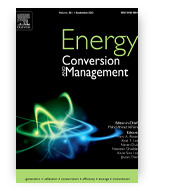 Over the years, the coupling of various variable renewable energy sources has emerged as a convenient way to partially or fully overcome their highly intermittent nature and low-capacity factors. In literature as well as in practical implementations, the coupling of solar and wind power systems is gaining special attention thanks to their advantageous complementarity in time. However, an area of yet not well-documented potential is the coupling of solar PV plants with non-dispatchable run-of-river hydropower plants. In this study, Poland, which still has significant untapped hydropower potential, is used as a case study. The objective of the work is to quantify the coupling potential with special attention paid to the unavoidable curtailment of solar generation due to the limited grid connection capacity. A simulation model was developed that uses input runoff, irradiation, and temperature hourly data covering the period 01.01.2008–31.12.2022 for 236 selected sites in Poland. Hydrological data were obtained from field measurements, while the remaining meteorological parameters were downloaded from the ERA5 reanalysis database. Hydropower generation was simulated assuming a constant head and a Kaplan turbine operating at different efficiencies depending on the flow rate through the turbine. The available flow was calculated considering environmental flow (e-flows) constraints. The design flow was determined based on the average multi-year flow in the considered river. The complementarity in time of these two renewable energy sources in each location was assessed by considering the grid connection capacity and resulting curtailment in case of too high simultaneous generation from both sources. The analysis showed that the average PV curtailment is about 10.7 % (or 13.2 % when it is solar PV capacity weighted) when the ratio of solar to hydro is equal. Still, it can be as high as 19.7 % in individual cases. To ensure that PV curtailment is no more than arbitrarily (in that case) selected threshold of 5 %, the solar-PV capacity should be between 58 % − 120 % of the designed hydropower plant capacity. The curtailment threshold can be further investigated as an expansion of a techno-economic analysis that fell out of the scope of this work. The additional analysis conducted by means of daily flow data showed a significant underestimation of solar curtailment in individual cases (i.e., up to 7 pp.) and, on average, lower by 0.24 pp. could be expected. Due to interannual flow variations, although the expected mean solar curtailment can be no more than 5 %, there are individual years when it is as low as 2 % and as high as 12 % of this year’s solar generation. The lessons learned from this study shed light on the potential maximization of local power generation through coupling with PV systems and the simultaneous reduction of environmental impacts by releasing higher quantities of e-flows offset by the integration of PV systems.
Over the years, the coupling of various variable renewable energy sources has emerged as a convenient way to partially or fully overcome their highly intermittent nature and low-capacity factors. In literature as well as in practical implementations, the coupling of solar and wind power systems is gaining special attention thanks to their advantageous complementarity in time. However, an area of yet not well-documented potential is the coupling of solar PV plants with non-dispatchable run-of-river hydropower plants. In this study, Poland, which still has significant untapped hydropower potential, is used as a case study. The objective of the work is to quantify the coupling potential with special attention paid to the unavoidable curtailment of solar generation due to the limited grid connection capacity. A simulation model was developed that uses input runoff, irradiation, and temperature hourly data covering the period 01.01.2008–31.12.2022 for 236 selected sites in Poland. Hydrological data were obtained from field measurements, while the remaining meteorological parameters were downloaded from the ERA5 reanalysis database. Hydropower generation was simulated assuming a constant head and a Kaplan turbine operating at different efficiencies depending on the flow rate through the turbine. The available flow was calculated considering environmental flow (e-flows) constraints. The design flow was determined based on the average multi-year flow in the considered river. The complementarity in time of these two renewable energy sources in each location was assessed by considering the grid connection capacity and resulting curtailment in case of too high simultaneous generation from both sources. The analysis showed that the average PV curtailment is about 10.7 % (or 13.2 % when it is solar PV capacity weighted) when the ratio of solar to hydro is equal. Still, it can be as high as 19.7 % in individual cases. To ensure that PV curtailment is no more than arbitrarily (in that case) selected threshold of 5 %, the solar-PV capacity should be between 58 % − 120 % of the designed hydropower plant capacity. The curtailment threshold can be further investigated as an expansion of a techno-economic analysis that fell out of the scope of this work. The additional analysis conducted by means of daily flow data showed a significant underestimation of solar curtailment in individual cases (i.e., up to 7 pp.) and, on average, lower by 0.24 pp. could be expected. Due to interannual flow variations, although the expected mean solar curtailment can be no more than 5 %, there are individual years when it is as low as 2 % and as high as 12 % of this year’s solar generation. The lessons learned from this study shed light on the potential maximization of local power generation through coupling with PV systems and the simultaneous reduction of environmental impacts by releasing higher quantities of e-flows offset by the integration of PV systems.
DOI:10.1016/j.enconman.2024.118307
Optimizing hydrothermal treatment for sustainable valorization and fatty acid recovery from food waste
Waheed Rasaq; Thiruchenthooran Vaikunthavasan; Paweł Telega; Łukasz Bobak; Chinenye Igwegbe; Andrzej Białowiec
Journal of Environmental Management
Ministerial score = 200.0
Journal Impact Factor (2023) = 8.7 (Q1)
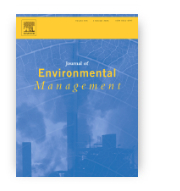 This study employs response surface methodology and a central composite design (CCD) to optimize hydrothermal treatment (HTT) conditions for the valorization of food waste (FW). Lab-scale pressure reactor-based HTT processes are investigated to detect the effects of temperature (220–340 °C) and resident time (90–260 min) on elemental composition and fatty acid recovery in the hydrothermal liquid. Central to the study is the identification of temperature as the primary factor influencing food waste conversion during the HTT process, showcasing its impact on HTT product yields. The liquid fraction, rich in saturated fatty acids (SFA), demonstrates a temperature-dependent trend, with higher temperatures favoring SFA recovery. Specifically, HTT at 340 °C in 180 min exhibits the highest SFA percentages, reaching up to 52.5 wt%. The study establishes HTT as a promising avenue for nutrient recovery, with the liquid fraction yielding approximately 95% at optimized conditions. Furthermore, statistical analysis using response surface methodology predicts the optimal achievable yields for hydrochar and hydrothermal liquid at 6.15% and 93.85%, respectively, obtained at 320 °C for 200 min.
This study employs response surface methodology and a central composite design (CCD) to optimize hydrothermal treatment (HTT) conditions for the valorization of food waste (FW). Lab-scale pressure reactor-based HTT processes are investigated to detect the effects of temperature (220–340 °C) and resident time (90–260 min) on elemental composition and fatty acid recovery in the hydrothermal liquid. Central to the study is the identification of temperature as the primary factor influencing food waste conversion during the HTT process, showcasing its impact on HTT product yields. The liquid fraction, rich in saturated fatty acids (SFA), demonstrates a temperature-dependent trend, with higher temperatures favoring SFA recovery. Specifically, HTT at 340 °C in 180 min exhibits the highest SFA percentages, reaching up to 52.5 wt%. The study establishes HTT as a promising avenue for nutrient recovery, with the liquid fraction yielding approximately 95% at optimized conditions. Furthermore, statistical analysis using response surface methodology predicts the optimal achievable yields for hydrochar and hydrothermal liquid at 6.15% and 93.85%, respectively, obtained at 320 °C for 200 min.
DOI:10.1016/j.jenvman.2024.120722
Silver Coordination Polymers Driven by Adamantoid Blocks for Advanced Antiviral and Antibacterial Biomaterials
Sabina W. Jaros; Magdalena Florek; Barbara Bażanów; Jarosław J. Panek; Agnieszka Krogul-Sobczak; M. Conceicao Oliveira; Jarosław Król; Urszula Śliwińska-Hill; Dmytro S. Nesterov; Alexander M. Kirillov; Piotr Smoleński
ACS Applied Materials & Interfaces
Ministerial score = 200.0
Journal Impact Factor (2023) = 9.5 (Q1)
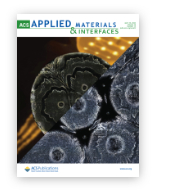 The development of sustainable biomaterials and surfaces to prevent the accumulation and proliferation of viruses and bacteria is highly demanded in healthcare areas. This study describes the assembly and full characterization of two new bioactive silver(I) coordination polymers (CPs) formulated as [Ag(aca)(μ-PTA)]n·5nH2O (1) and [Ag2(μ-ada)(μ3-PTA)2]n·4nH2O (2). These products were generated by exploiting a heteroleptic approach based on the use of two different adamantoid building blocks, namely 1,3,5-triaza-7-phosphaadamantane (PTA) and 1-adamantanecarboxylic (Haca) or 1,3-adamantanedicarboxylic (H2ada) acids, resulting in the assembly of 1D (1) and 3D (2). Antiviral, antibacterial, and antifungal properties of the obtained compounds were investigated in detail, followed by their incorporation as bioactive dopants (1 wt %) into hybrid biopolymers based on acid-hydrolyzed starch polymer (AHSP). The resulting materials, formulated as 1@AHSP and 2@AHSP, also featured (i) an exceptional antiviral activity against herpes simplex virus type 1 and human adenovirus (HAd-5) and (ii) a remarkable antibacterial activity against Gram-negative bacteria. Docking experiments, interaction with human serum albumin, mass spectrometry, and antioxidation studies provided insights into the mechanism of antimicrobial action. By reporting these new silver CPs driven by adamantoid building blocks and the derived starch-based materials, this study endows a facile approach to access biopolymers and interfaces capable of preventing and reducing the proliferation of a broad spectrum of different microorganisms, including bacteria, fungi, and viruses.
The development of sustainable biomaterials and surfaces to prevent the accumulation and proliferation of viruses and bacteria is highly demanded in healthcare areas. This study describes the assembly and full characterization of two new bioactive silver(I) coordination polymers (CPs) formulated as [Ag(aca)(μ-PTA)]n·5nH2O (1) and [Ag2(μ-ada)(μ3-PTA)2]n·4nH2O (2). These products were generated by exploiting a heteroleptic approach based on the use of two different adamantoid building blocks, namely 1,3,5-triaza-7-phosphaadamantane (PTA) and 1-adamantanecarboxylic (Haca) or 1,3-adamantanedicarboxylic (H2ada) acids, resulting in the assembly of 1D (1) and 3D (2). Antiviral, antibacterial, and antifungal properties of the obtained compounds were investigated in detail, followed by their incorporation as bioactive dopants (1 wt %) into hybrid biopolymers based on acid-hydrolyzed starch polymer (AHSP). The resulting materials, formulated as 1@AHSP and 2@AHSP, also featured (i) an exceptional antiviral activity against herpes simplex virus type 1 and human adenovirus (HAd-5) and (ii) a remarkable antibacterial activity against Gram-negative bacteria. Docking experiments, interaction with human serum albumin, mass spectrometry, and antioxidation studies provided insights into the mechanism of antimicrobial action. By reporting these new silver CPs driven by adamantoid building blocks and the derived starch-based materials, this study endows a facile approach to access biopolymers and interfaces capable of preventing and reducing the proliferation of a broad spectrum of different microorganisms, including bacteria, fungi, and viruses.
DOI:10.1021/acsami.3c15606
Revealing sustainable mindsets among older adults concerning the built environment: The identification of six typologies through a comprehensive survey
Joost Van Hoof; Jeroen Dikken
Building and Environment
Ministerial score = 200.0
Journal Impact Factor (2023) = 7.4 (Q1)
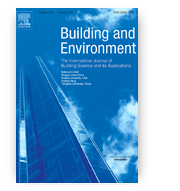 Efforts to create age-friendly cities progressively intersect with goals for environmental sustainability. The older people's beliefs, behaviours and financial aspects regarding environmental sustainability in their lives are an understudied topic and not well understood. Therefore, a representative survey was conducted using the psychometrically sound and comprehensive SustainABLE-16 Questionnaire. A total of 388 respondents, who were community-dwelling older people in The Hague, filled out the survey completely. Overall, the mean scores on the SustainABLE-16 for finance- and environment-driven pro-environmental behaviours, beliefs and the financial position among older people were positive for all districts of The Hague. Using the outcomes of the survey, a total of six unique typologies were identified through a two-step process combining hierarchical and k-means cluster analyses. These six typologies are 1 the staunch non-believers, 2 the finance-driven non-believers, 3 the everyday individuals, 4 belief-driven people with limited financial resources, 5 believing non-responders, 6 the affluent and engaging people. These six typologies each require different approaches from policymakers. Sustainability-related policies should ideally focus on groups with high scores for pro-environmental behaviours but who have shortcomings in knowledge how to improve one's everyday lifestyle and groups who lack the necessary financial means to live a more sustainable life.
Efforts to create age-friendly cities progressively intersect with goals for environmental sustainability. The older people's beliefs, behaviours and financial aspects regarding environmental sustainability in their lives are an understudied topic and not well understood. Therefore, a representative survey was conducted using the psychometrically sound and comprehensive SustainABLE-16 Questionnaire. A total of 388 respondents, who were community-dwelling older people in The Hague, filled out the survey completely. Overall, the mean scores on the SustainABLE-16 for finance- and environment-driven pro-environmental behaviours, beliefs and the financial position among older people were positive for all districts of The Hague. Using the outcomes of the survey, a total of six unique typologies were identified through a two-step process combining hierarchical and k-means cluster analyses. These six typologies are 1 the staunch non-believers, 2 the finance-driven non-believers, 3 the everyday individuals, 4 belief-driven people with limited financial resources, 5 believing non-responders, 6 the affluent and engaging people. These six typologies each require different approaches from policymakers. Sustainability-related policies should ideally focus on groups with high scores for pro-environmental behaviours but who have shortcomings in knowledge how to improve one's everyday lifestyle and groups who lack the necessary financial means to live a more sustainable life.
DOI:10.1016/j.buildenv.2024.111496

